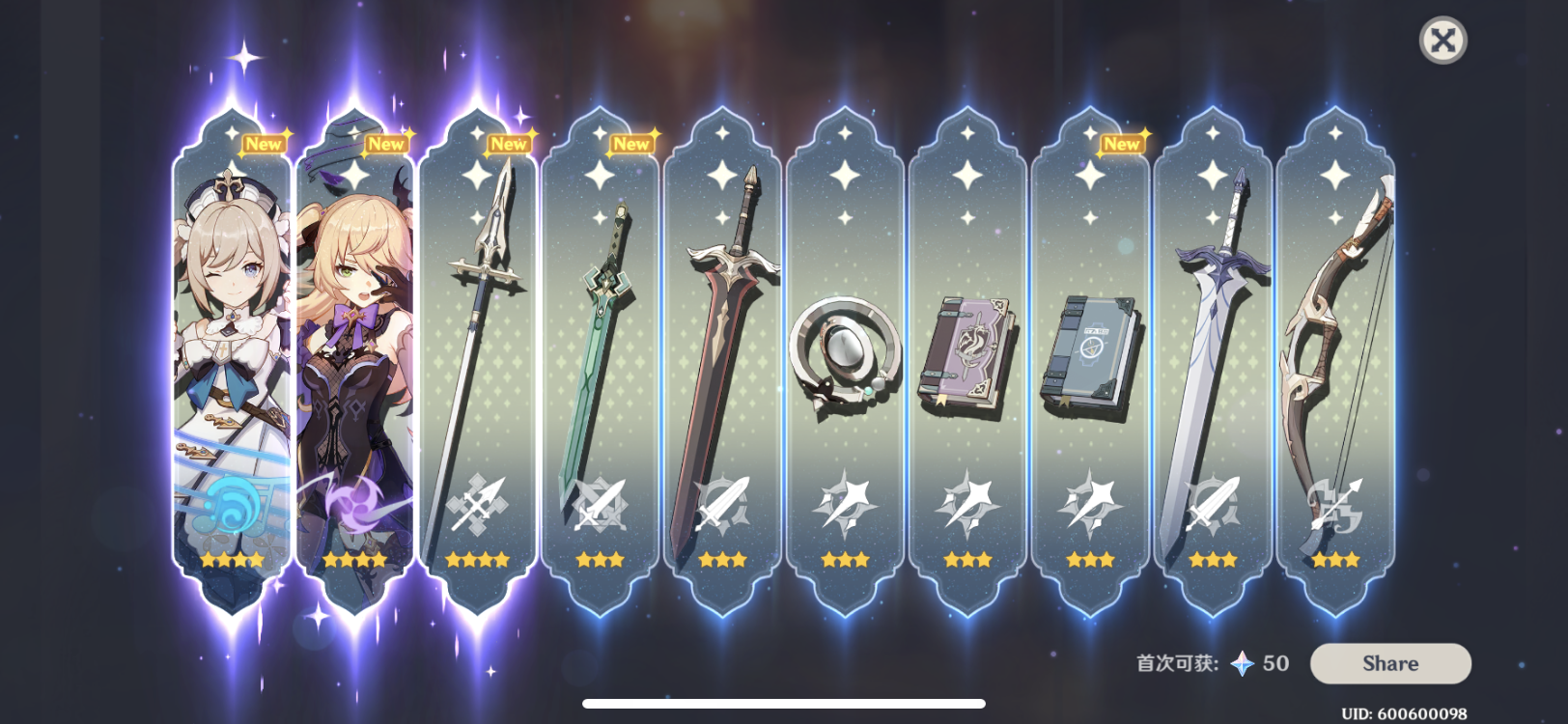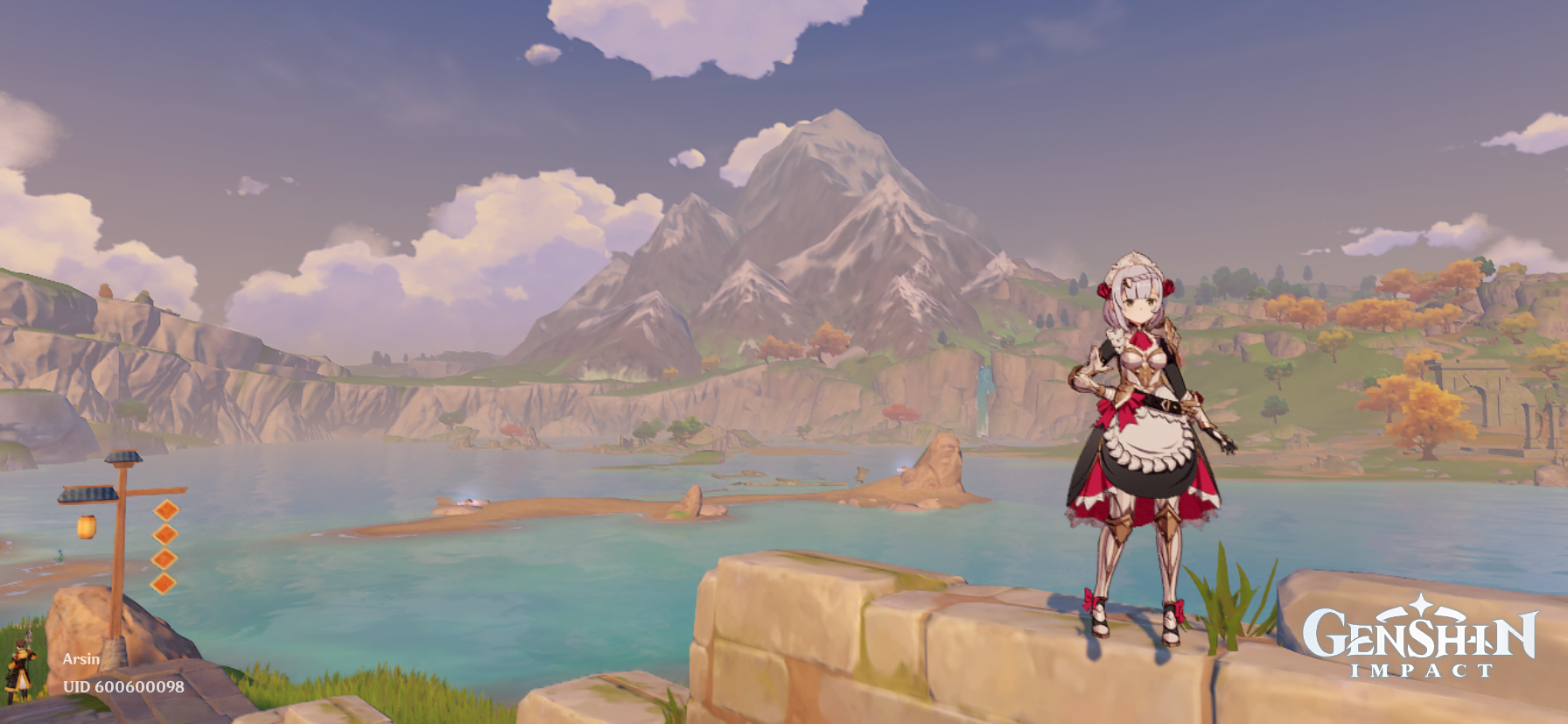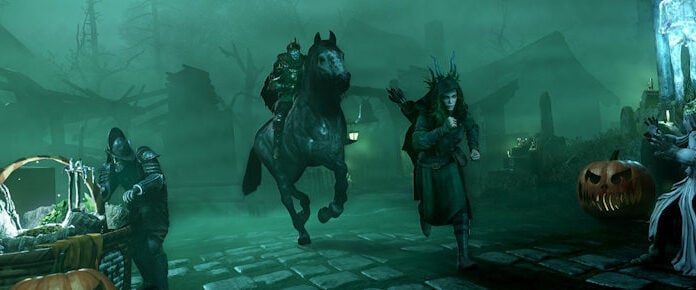
Yes, I know Genshin Impact isn’t an MMORPG. It’s not even an MMO; it’s just regular old multiplayer. But when its first four days sees 17 million players and $50M in revenue, either something went really right or well-trodden MMO business models are beginning to show distinct flaws. Both MMO players and developers should be examining this to figure out what just happened because you’d better believe online gaming heads are all looking at this game right now to learn how to capture the same magic (and money) in their own titles.
Much like MOP’s Eliot, who already gave his first impression of the game, I kept an eye on Genshin Impact through its development. I didn’t really pay close attention to it, though – not because I wasn’t excited but because I knew that it was going to be great, and I wanted to gush over the game after it came out rather than longingly wait for my next hit of anime waifus. But holy cannoli. I knew this game was going to be a hit, but I did not expect this to be a critical hit. And I’m ecstatic.

I’m no stranger to miHoYo or its games; I’m actually a huge fan. While I didn’t play all of its earlier titles, I’ve spent well over 500 hours and three years on Honkai Impact 3rd, a Bayonetta-inspired action game with gacha mechanics. This game, and the company, convinced me that gacha games are more than the easy cash grabs Square-Enix and other major studios made them out to be. This game ruined mobile gacha games for me. No other mobile game has even gotten close to the level of quality Honkai Impact achieved — that is, until miHoYo went out and outdid itself.
So coming into Genshin, I had a lot of faith in the company and the product. I’m glad that people are giving both the game and the company the recognition it deserves. But what exactly went so right with this game that even mainstream western gamers lost their minds over it? Let’s explore.
A gacha primer
I’m pretty sure that for many gamers, this will be their first gacha game. For others, this might be the first time they’ve even heard the term, though we’ve been talking about it here on Massively OP and Old Massively for a long time. Either way, let’s do a quick introduction.
The term originates from gachapon machines found throughout Japan (and in California’s case, local Hot Topic stores). It’s basically a capsule machine similar to the those found in many American grocery stores that contain a variety of candy, sticky hands, and those little things that get bigger when left in a bowl of water. The gachapon takes it to a whole other level, though, containing prizes that certain fandoms will give their eye teeth for. Of course, the fun in it comes from getting a random item every time and that sweet feeling of completing a set… an otaku’s dream.

The gacha game is basically that, just in video game form. Players purchase the game’s currency and “pull” with the hopes they receive the items or characters they need. Sound familiar? Of course it does! It’s an entire genre where lootboxes/lockboxes/gamebleboxes are central to progression (though it’s technically more like a slot machine than a lootbox). Yes, I said progression. Who needs a new skin when that next pull could be a 5-star jpeg that also has a 95% crit chance!? It’s a whole genre based on pay-to-win, RNG, and grinding. And you know something went wrong (or very right, depending on whom you talk to) when people are playing this game rather than some battle royale with cosmetics and a battlepass.
These games aren’t safe from regulation. In 2012, the Japanese government banned the use of “completion gacha” mechanics in such games. This form of gacha requires players to complete a certain item set in order to create an even rarer and more powerful item. But despite government intervention, the genre thrives. Make no mistake: It’s highly addictive, a form of gambling, and can create massive financial strains on some players. But it’s still a popular genre, and Genshin Impact just showed how it can be done well.

Creating a new normal
As soon as I started the game for the first time, I immediately noticed what the devs have removed from the classic formula: the menu. This is huge. Gacha games are infamous for having these cluttered menus full of notifications, instructions, news, updates, a button to get into the housing system, a button to go to the gacha, a button to start the missions, and whatever else the game needs. It’s headspinning. miHoYo took that out completely.
Now it’s more like a game. There are two main towns right now, each having an NPC doing the same thing those menus would’ve done. Dungeons and stages that had to be started from the menu in other games require players to actually visit that location. It just makes the entire experience all the more immersive. Imagine that, the developers throwing out the menus and replacing it with a game. Who would’ve ever thought that would work?
miHoYo also modified the typical gacha energy system. Traditionally, players have a daily allotment of energy. When that runs out, they can either wait or pay. (Don’t pay. It’s always a bad idea.) This time around, energy (or resin as this game calls it) is used upon completion of special overworld events called “leyline outcrops” that award valuable loot. Players could spend their entire day playing this game, and the game’s not going to tell you to stop.
Considering how more and more MMOs are entering the mobile space, I’d say they better take notes. This game was clearly designed with cross platform from the start. Mobile MMOs today suffer from too many menus. The mobile version has a clean and simple UI, and if people are confusing the game for an MMO just from looking at it, maybe MMO companies need to start thinking about how they can do that too.

A gacha game for the global market
I put in about 60 hours of gameplay before starting this write-up. My objective was simple: play until I had to pull the gacha with my own money. That hasn’t happened yet. Playing casually, I ground out enough of the currency to make 60 pulls; that’s about $110. I use the term “grind” loosely here, as most of that currency was earned through normal gameplay, achievements, and daily rewards.
This game, much like its predecessor, rewards regular play. Given Honkai Impact’s track record, I know that free-to-play folks will receive a steady stream of the currency to make the big pulls when a character they want joins the gacha. It’s completely possible to succeed in these games without spending a cent.

Something few take note of are the gacha’s mechanics itself. It’s actually pretty forgiving by gacha standards. Usually, players get a choice between doing a single pull or a 10-pull. Historically, the 10-pull is usually the practical choice because it offers an extra incentive of a guaranteed good drop. Genshin did away with that. Every 90 pulls guarantees a 5 star while every 10 pulls guarantees a 4 star. (It resets if a 5-star procs prior to the 90th pull.) Every pull, be it a single pull or a 10 pull, contributes to that, so in theory, players with two bucks to spare can play the slots with hopes of getting that character they want. It’s a simple change, but it’s ingenious.
In sum, Genshin offers a forgiving gacha, beautiful visuals, and adjustment to the very mechanics that ensure every dollar put in will (eventually) guarantee something decent. I’m convinced that even those on the fence with these kind of games would be willing to give it a good ol’ college try.
But innovations in gettin’ ya at the gacha aren’t the only thing that’s making this game something special. There’s the gameplay and how its keep free-to-play players engaged. Join me for part two of this piece later this week, when I’ll discuss the gameplay and what to expect in the long run!
















